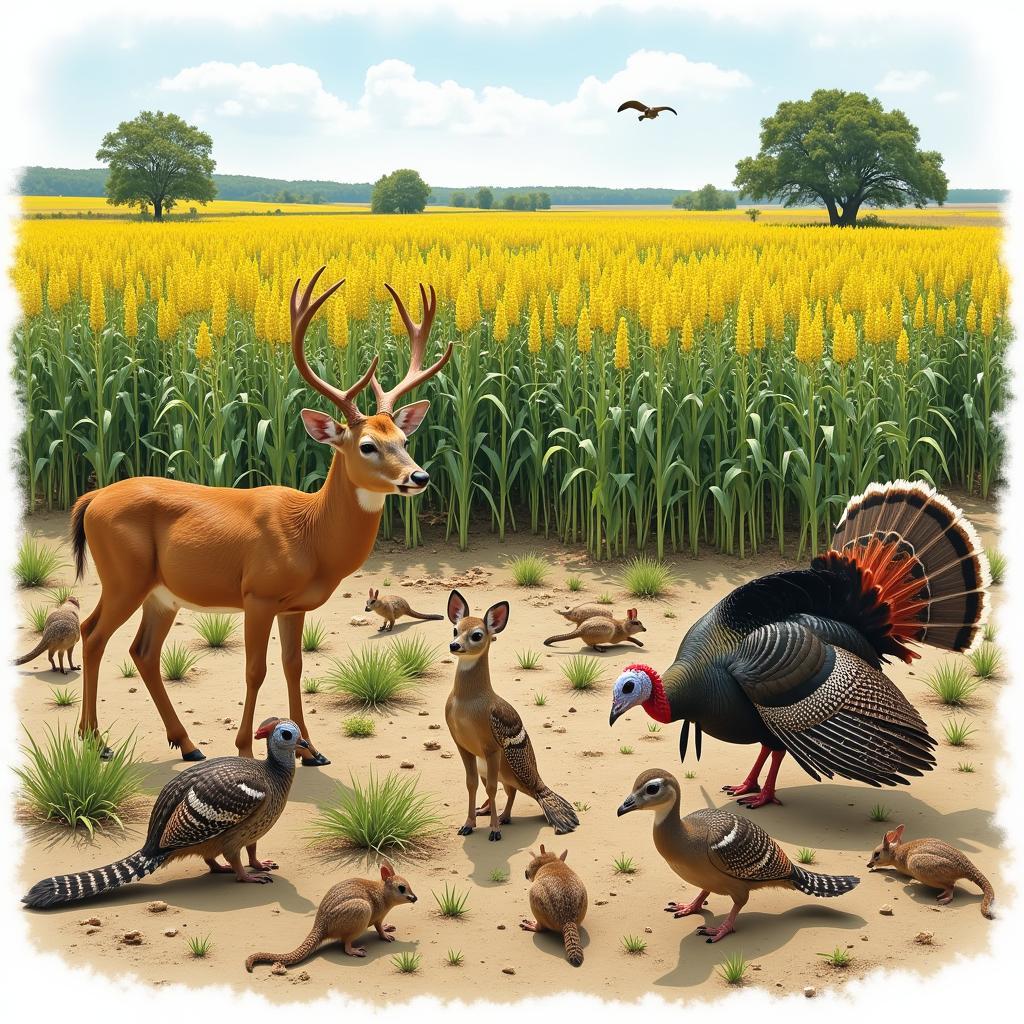Sorghum Food Plot Seed has emerged as a powerhouse in the world of wildlife management and sustainable food sources. This versatile and resilient crop offers numerous benefits for both landowners and the wildlife they support, making it an increasingly popular choice for food plots across diverse terrains.
Why Choose Sorghum for Your Food Plot?
Sorghum’s popularity stems from its remarkable adaptability and nutritional value. This drought-tolerant crop thrives in various soil types and climates, even in regions with poor soil fertility. Its robust root system allows it to withstand periods of low rainfall, making it a reliable option for areas prone to dry spells. Moreover, sorghum food plot seed delivers a nutritional punch, boasting high protein and energy content that greatly benefits deer, turkey, and other wildlife, especially during crucial periods like antler growth and fawn rearing.
Selecting the Right Sorghum Variety
Choosing the right sorghum variety is crucial for maximizing your food plot’s success. Consider factors like your region’s climate, soil conditions, and the specific wildlife you aim to attract. For instance, some sorghum varieties are bred for early maturity, while others excel in specific soil types like the ones you might find in a shady food plot. Researching and selecting the ideal sorghum food plot seed ensures optimal growth and nutritional content tailored to your needs.
Establishing and Maintaining Your Sorghum Food Plot
Successfully establishing a sorghum food plot involves proper soil preparation, planting techniques, and ongoing maintenance. Begin by clearing the planting area of existing vegetation and conducting a soil test to determine if any amendments are needed. Plant sorghum seeds at the recommended depth and spacing for your chosen variety. Regular monitoring for pests and weeds, along with timely fertilization, will further enhance the health and productivity of your sorghum plot.
Benefits Beyond Wildlife
Sorghum food plots offer advantages that extend beyond supporting wildlife. They can contribute to soil health by improving soil structure and reducing erosion. As a fast-growing crop, sorghum can also act as a natural weed suppressant, minimizing the need for herbicides. In some cases, sorghum can even be harvested for grain, providing an additional source of income or feed for livestock.
 Sorghum Field with Wildlife Diversity
Sorghum Field with Wildlife Diversity
Sorghum: A Sustainable Choice for Wildlife Management
In an era of increasing environmental consciousness, sorghum food plot seed emerges as a sustainable choice for wildlife management. Its ability to thrive in diverse conditions with minimal inputs aligns with eco-friendly practices. By choosing sorghum, landowners can contribute to the well-being of wildlife populations while minimizing their environmental impact.
In conclusion, sorghum food plot seed presents a winning combination of adaptability, nutritional value, and sustainability, making it an excellent choice for landowners seeking to enhance their property’s appeal to wildlife and contribute to a healthier ecosystem.